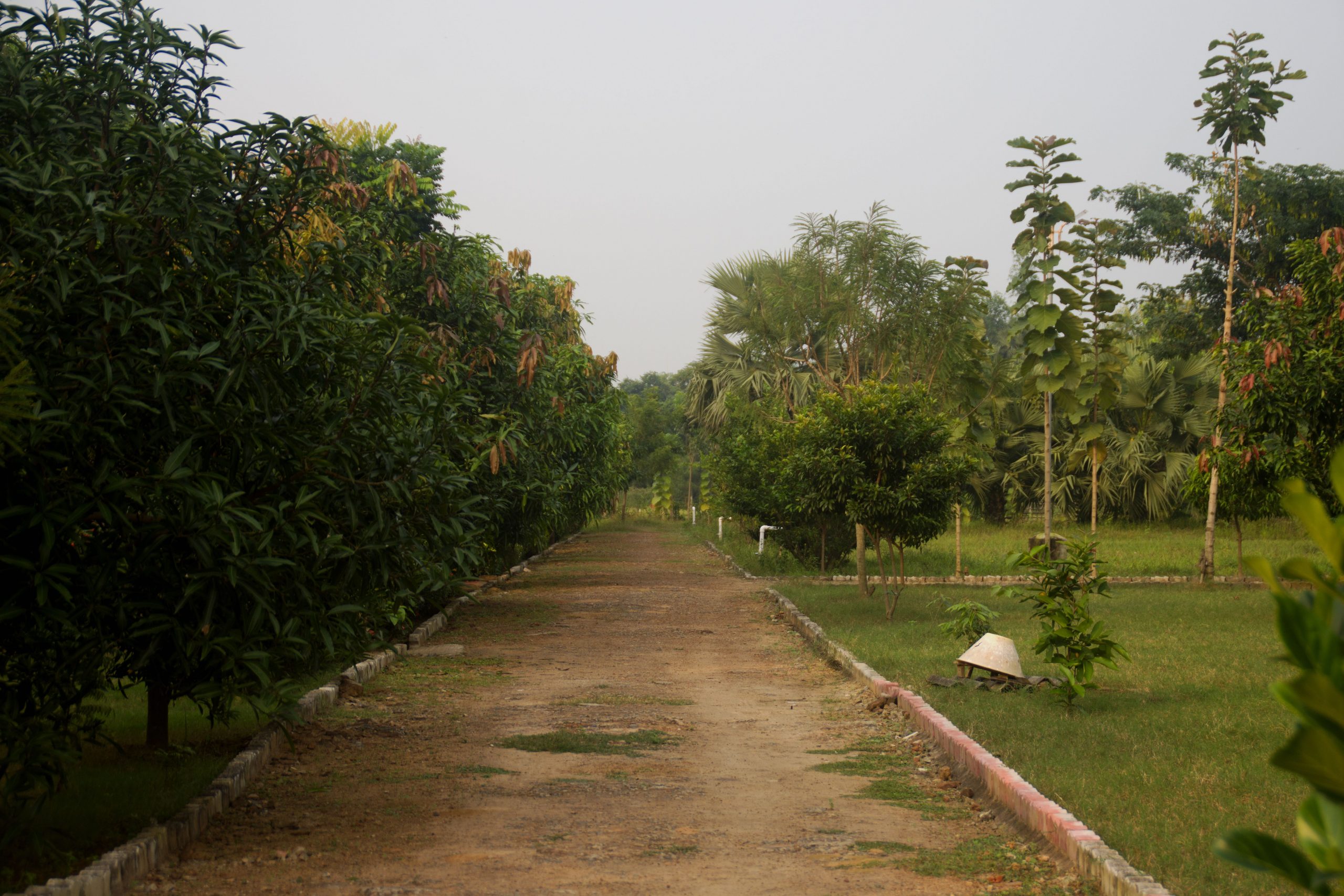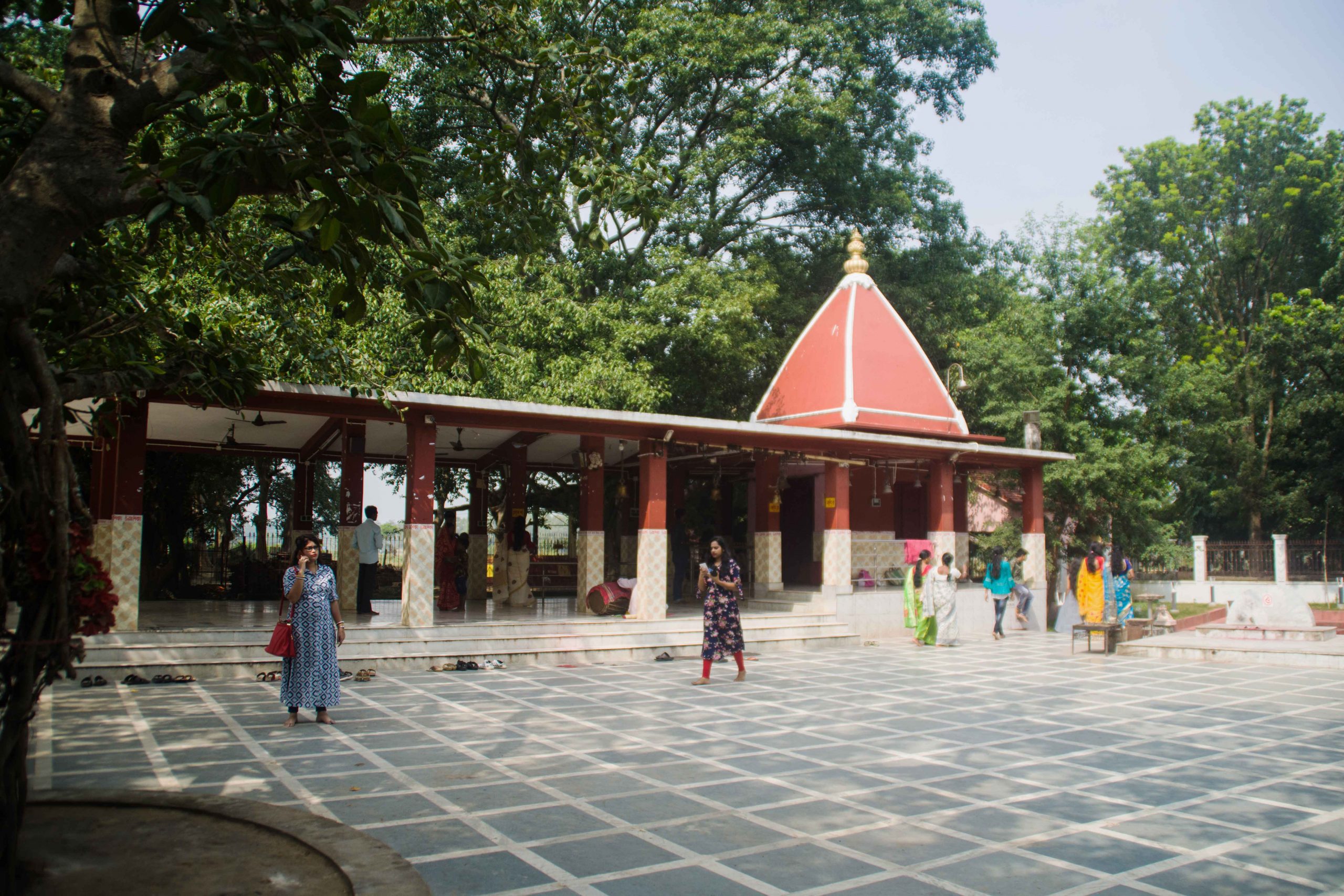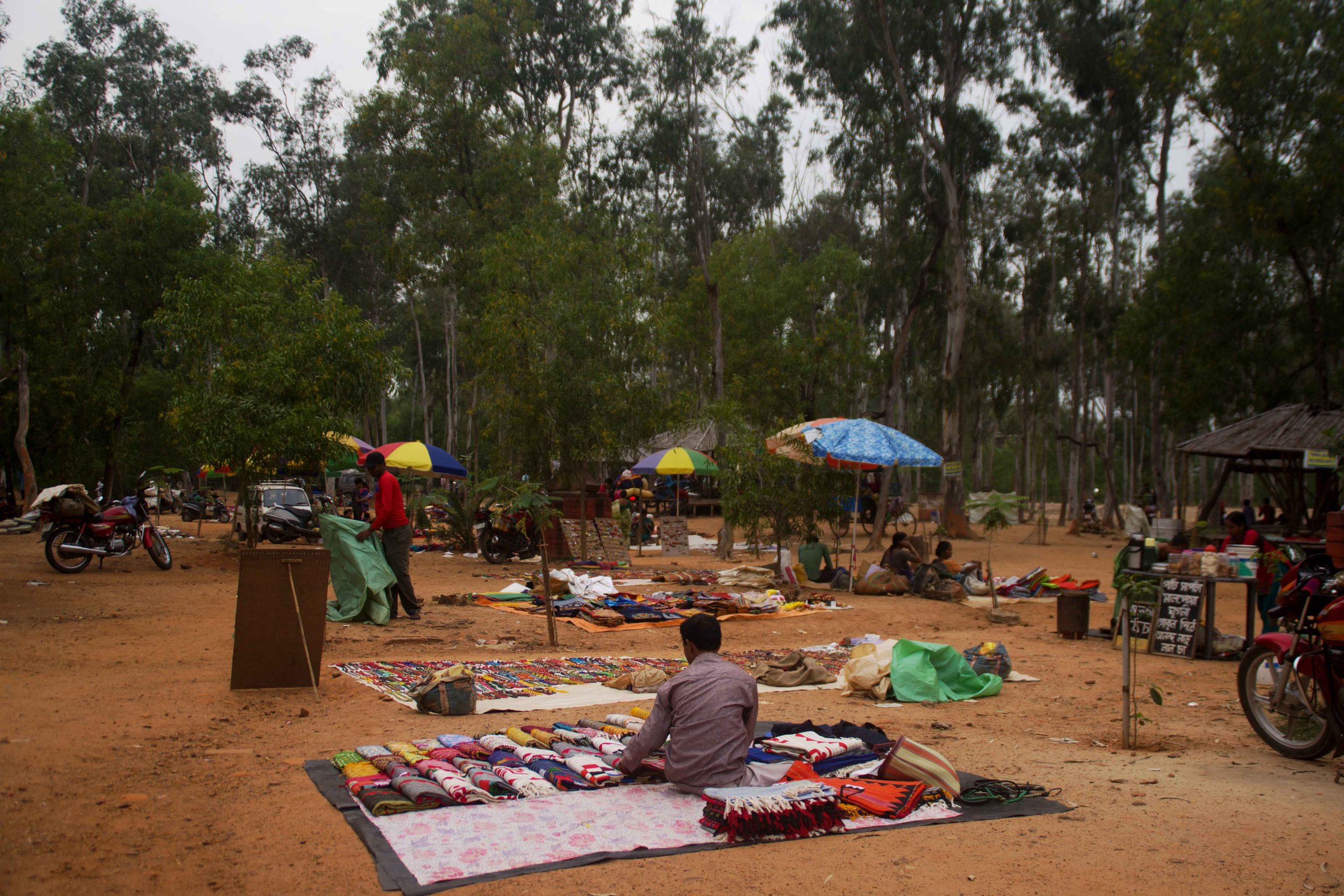Bolpur.. A place to relax and unleash…
Our group – Me, Tepu, Maa,
Baba, Shankar Da, Sandeep, Bidyut Da
Almost all Bengalis love to speak about Shantiniketan. They practically love to visit the place again and again too. This Tagore’s den is in Bolpur, a town in the district of Birbhum in the Indian state of West Bengal. Shantiniketan has its own charm. But here we’ll talk about the district in its own rights.
Bolpur is around two and half hours journey from Kolkata by express trains. And there are plenty of them. Local and passenger trains also ply between Kolkata and Bolpur. This time we took Kanchanjangha express. It starts from Sealdah and stops for a minute at Dakshineshwar. We boarded from here. It’s a morning train and reaches Bolpur by 9.30 am. Our stay was at Sabuj Soumi Dwip. It’s a sprawling farm with five cottages for guests. Food here is simple but delicious.
We decided to skip Shantiniketan this time and tour around the other places. This entire district is compulsively rustic and beautiful. So as many days the stay may last, something or the other keeps on coming to experience. I had no wish to lose any opportunity. After finishing breakfast at Bolpur station railway canteen, Jan Aahaar, we hired two battery vehicles, toto, and divided our group into two for different routes. One toto went to the resort and the other one directly to Amar Kutir.
Needless to say I headed to Amar Kutir. Amar Kutir is again a place to experience. Sushen Mukherjee started it as a refuge for the freedom fighters. Slowly it evolved and now it’s a society for local rural development. They produce several items through different arts and crafts forms. They have their own workshops. The batik workshop is in the compound itself and the leather workshop is at a stone throw distance in the premises of their restaurant. This organization aims for local employment and business through local produce. Compare to outside market their prices are bit high, but knowing that the money goes to local communities, it’s worth spending. They have dokra items, leather bags, leather chappals, handmade paper stationery items, sarees – readymade dresses – dress materials – in batik as well as hand broidered silk and cotton fabrics, and there are lot of other knick-knacks to choose from. The shop has its own rustic appearance which is appealing. The approach road to this place is through forest. This itself is a big charm that you are going shopping through forest. The premises has a small museum, opportunity to listen to baul songs and a good enough big open space for unwinding.
Amar Kutir is a must recommendation to visit. But it must not be confused to be anything related to Tagore. It’s a separate effort and a much more community welfare oriented effort. Post noon we’re back our resort in the village of Amdahara which is near Kankalitala and around 22 km from Amar Kutir. The nearest station is Prantik, but many trains don’t stop there. Hence Bolpur is the easier option.

The Soumee Garden
Now a lazy time in an organic farm with food that mostly grown in this farm itself. Next day we started with the nearby Mataji’s ashram. It’s a small initiative by a middle age lady for education of local village girls. This runs on donation and the effort is genuine.
Afterward we visited Kankalitala temple. The mother goddess here is famous and revered and loved by locals as well as people from distant places.

Kankalitala temple
The temple is small one. The intriguing matter is till date animal sacrifice is practiced here and the sacrifice stand – the harikath – and its adjacent floor are smeared with blood stains.
Our next stop is at wood fossil park in the village of Amkhoi. Recently the forest department has found out wood fossil from here while digging a pond there.

Fossil Park
The fossils are of around 20 million years old. It’s yet to be determined which trees are these. Chances are there those trees went extinct long ago. There are several fossils kept and scattered in the park. There is no ticket at present but a museum and pond with an island are being planned. Once up as a tourist destination, tickets also will come. Present serenity will be compromised also, at least to some extent. Along with the fossils, the forest department has developed a medicinal plants garden in the park. These are the local plants that tribal people use even today for their ailments and good health. Where modern medicine is almost a far cry, these herbs keep them agile – and it seems a better option too. The guide over there is from local tribe. He is capable enough to show and explain the fossils and the herbs. He also shows some very interesting display items. There are some pieces of fossil, that look like a broken cavity. The inner surface of the cavity has some color. The guide explains that these are mineral colors that form color pockets inside the fossils during petrifaction. He also shows a whole piece which looks like a stone. While shaking it produces a sound that indicates small particles are there inside it. This is a fossil part carrying color beads. Which color it might be can be found only after breaking it open. For obvious reasons, not a single pebble is allowed to take away from the premises. There is a small tea shop nearby, part of the park. It has typical clay stove and clay plaster on its walls. On that some tribal paintings are done. The colors are all from the fossil colors obtained while excavating the park. They are beautiful naturally. If the guide cum guard friendly with the visitor, he offers something.

Colors!!
He has a small collection of fossil colors. He displays their versatility by drawing some line on the visitor’s hand. There are around ten different colors that he showed on the day we visited. All are in powder form. They have a soothing finish once applied.
We gathered a small bottle of mahua oil here. This oil is used extensively among tribal people for various purposes. The person making tea in the shop ran on a cycle to someone’s house to bring this. It has a pungent smell and we are yet to try it. Over and out of the forest. Now we are heading to a village to search a plot that a family friend has purchased. Internet is a feeble entity here and there is no route guide. So during our long haul of spotting the spot, we actually went through the internal villages. The calm and slow village life unfolded itself through our quest. Finally we could locate the plot and relished the eureka moment.
It was getting late for lunch that is ready in the resort. But it was really difficult to avoid totally the street on Viswa Bharati road which decks itself up with a long row of handicrafts shops. To manage time, here again we split into groups and browsed through some shops as per individual interest. This street can provide a leisure walk in evening with more window shopping and some actual shopping. But natural appeal is not present here.
It was bad that we reached resort for lunch by 4 pm. We were seriously hungry. This afternoon was again spent in relaxation. Comes next day and we have the return Kanchanjangha express from Bolpur in evening. Early morning was spent in the farm. A cyclone was approaching, so the day was cloudy and the morning was not ending. The farm has some over yielding orange and lemon trees. The specialty of this orange is its sourness. It’s deadly. Nobody can eat them directly. We collected a lot to distribute among people back home asking them to suggest how best this can be utilized. Sometimes before breakfast we visited an upcoming poultry farm just across the road from the resort. Again some open space, an endless road and a lot of greenery around.
Post lunch again a group division. A car went directly to Bolpur station and a toto to Sonajhurir Haat. Again, I am in the toto.

The Haat!!
This haat has several names, like Shonibarer Haat (Saturday flea market), Khoai Boner Haat (flea market of laterite forest) etc. The original moto behind this market was to exhibit and sale produces from local artisans. It used to be held only on Saturday afternoon – post lunch to daylight time. Presently it comes every day, but maximum rush still comes on Saturdays. Previously anybody makes anything used to come here weekly to sell the produce. As more tourists are coming, so this place became more commercialized. Now there are vendors who outsource the products from several places and bring them here. But still even now also, there are vendors who come here to sell their own crafts. The visitor must be able to judge what they want and go for shopping here. Generally the prices go high on Saturdays. On other days it’s reasonably cheaper. The main draw of this market is all the items are having a typical artistic rural Bengal look, which is appealing. The surrounding provides a great backdrop with lot of trees around, the red soil to walk on and the slow setting sun. Sun sets and the market ends for the day. It’s good to be there. Something or the other definitely will catch the eyes and something or the other will definitely bring somebody’s memory and you’ll purchase something or the other for somebody somewhere. The entire atmosphere beams with sensations. And there are also some bauls singing somewhere in the market, or some tribal groups dancing with the drum called madal. It’s beautiful altogether.

Boul Singer
From Sonajhuri (it’s a tree name which yields yellow flowers) the same toto took us to Bolpur station.
The express was late and we waited patiently as rush does not seem matching with this place. By late evening we were in home.
We traveled there with three elderly persons and our terrible two years old daughter, Tumbi. This place suits all. Tumbi never stopped either running in the open, or mimicking the flee of cattle egrets that come to the farm’s freshly ploughed land, or falling on the murram, or running behind the butterflies, or simply loitering about.
This is a place to relax and unleash.
**************